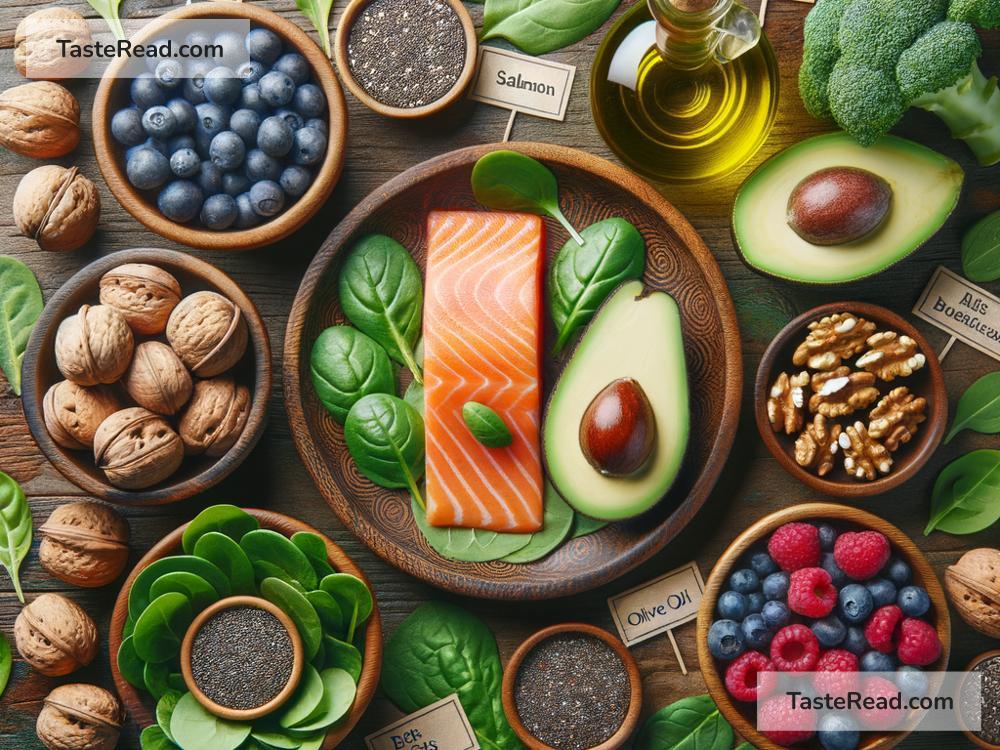Boost Your Lipid Metabolism with these Healthy Foods
Are you looking for ways to improve your lipid metabolism? Lipid metabolism is the process by which your body uses and manages fats, or lipids. A balanced lipid metabolism is essential for overall health, as it influences energy production, hormone levels, and cholesterol balance. Fortunately, the foods we eat can play a key role in improving lipid metabolism. In this article, we’ll explore some simple, accessible, and nutritious foods that support your body’s ability to process and utilize fats efficiently.
What is Lipid Metabolism, and Why Does it Matter?
Lipid metabolism refers to how your body breaks down fats from food, stores them for energy, and uses them for bodily functions. This process involves enzymes, hormones, and your liver, which regulates cholesterol and triglycerides. When lipid metabolism is healthy, your body maintains an ideal balance of fats, keeping your cholesterol levels in check and reducing the risk of heart disease, diabetes, and other chronic illnesses.
If lipid metabolism isn’t working as it should—for example, if you have high cholesterol or high triglycerides—it can lead to fat accumulation, clogged arteries, and increased risk of health problems. Thankfully, eating the right foods can help promote better lipid metabolism and improve overall health.
Foods to Improve Lipid Metabolism
Let’s take a look at some foods that support healthy fat processing in your body. These foods are packed with nutrients that improve cholesterol levels, promote fat burning, and reduce inflammation.
1. Fatty Fish – Rich in Omega-3 Fatty Acids
Fatty fish, such as salmon, mackerel, sardines, and tuna, are excellent sources of omega-3 fatty acids. These healthy fats reduce inflammation in the body and promote better lipid metabolism. They can help lower triglycerides and improve your cholesterol profile by increasing “good” HDL cholesterol.
Omega-3s also support heart health by keeping your arteries clear and boosting your ability to use fats for energy. Aim to include fatty fish in your diet at least twice a week.
2. Avocados – A Superfood for Healthy Fats
Avocados are a powerhouse of monounsaturated fats, which are great for improving lipid metabolism. These healthy fats help reduce “bad” LDL cholesterol and increase “good” HDL cholesterol. Avocados are also packed with fiber, which further supports cholesterol regulation and overall digestion.
Try adding avocado slices to salads, blending it into smoothies, or using it as a healthy spread for sandwiches. You’ll be doing your lipid metabolism a favor while enjoying a delicious and creamy treat!
3. Nuts and Seeds – A Nutrient Boost
Nuts, such as almonds, walnuts, and cashews, along with seeds like chia seeds and flaxseeds, are rich in healthy fats, fiber, and plant-based proteins. Walnuts, in particular, contain omega-3 fatty acids, while almonds are high in vitamin E and antioxidants.
These foods can help lower cholesterol levels, reduce inflammation, and improve the way your body processes fats. A small handful of nuts or a sprinkle of seeds on your cereal or yogurt can go a long way in supporting lipid metabolism.
4. Olive Oil – A Heart-Healthy Fat
Olive oil is another great source of monounsaturated fats. Studies have shown that olive oil improves cholesterol levels and promotes better fat metabolism. It’s also rich in antioxidants, which help reduce damage caused by inflammation.
Swap butter or vegetable oil for olive oil when cooking, drizzle it over salads, or use it as a dip for bread. Choose extra-virgin olive oil for maximum health benefits.
5. Whole Grains – High in Fiber
Whole grains, such as oats, quinoa, brown rice, and whole wheat bread, are packed with dietary fiber. Fiber plays a key role in lipid metabolism by helping to remove excess cholesterol from your body. Soluble fiber, found in oats, is particularly effective in reducing LDL cholesterol.
Start your day with a bowl of oatmeal or add whole grains to your meals to support better fat processing while keeping your energy levels stable.
6. Leafy Greens – Low in Calories, High in Nutrients
Leafy greens like spinach, kale, and Swiss chard are rich in vitamins, minerals, and antioxidants that improve lipid metabolism. They are also low in calories, making them an ideal choice for those looking to maintain or lose weight.
The fiber and plant compounds in greens help lower cholesterol and support overall heart health. Try incorporating them into salads, soups, or smoothies for an extra nutritional boost.
7. Green Tea – A Metabolism Booster
Green tea is known for its fat-burning properties and ability to boost metabolism. This beverage contains catechins, antioxidants that help improve lipid metabolism and reduce LDL cholesterol. Drinking green tea regularly may also support weight loss and overall heart health.
Replace sugary beverages with a cup of green tea to improve fat utilization and enjoy its soothing benefits.
Small Changes Lead to Big Results
Improving lipid metabolism doesn’t require drastic changes to your diet. Simply including more of these healthy, nutrient-rich foods in your meals can make a big difference over time. Focus on incorporating a mix of healthy fats, fiber, antioxidants, and plant-based nutrients into your daily routine.
Remember, eating well is only part of the picture. Regular exercise, staying hydrated, and managing stress also play a role in maintaining balanced lipid metabolism. Together, these healthy habits can support your body’s ability to process fats efficiently, keeping you feeling energized and reducing your risk of chronic disease.
Final Thoughts
Your lipid metabolism is key to your overall health, and what you eat matters. By integrating foods like fatty fish, avocados, nuts, seeds, whole grains, and leafy greens into your diet, you can improve fat processing and help your body maintain a healthy cholesterol balance. Pair these dietary tips with an active lifestyle, and you’ll be on your way to a healthier, happier you. Start small, stay consistent, and enjoy the benefits of better lipid metabolism!


